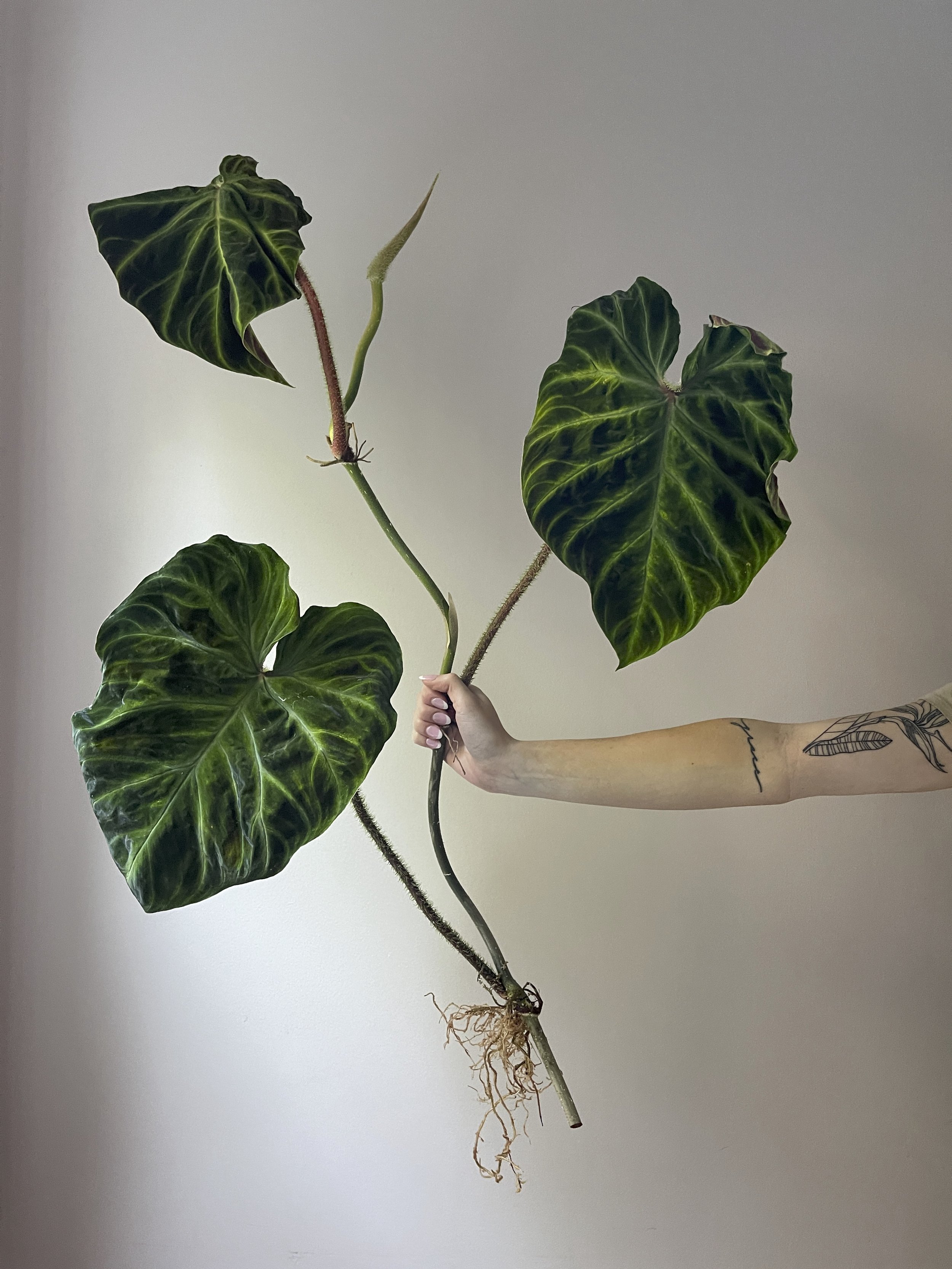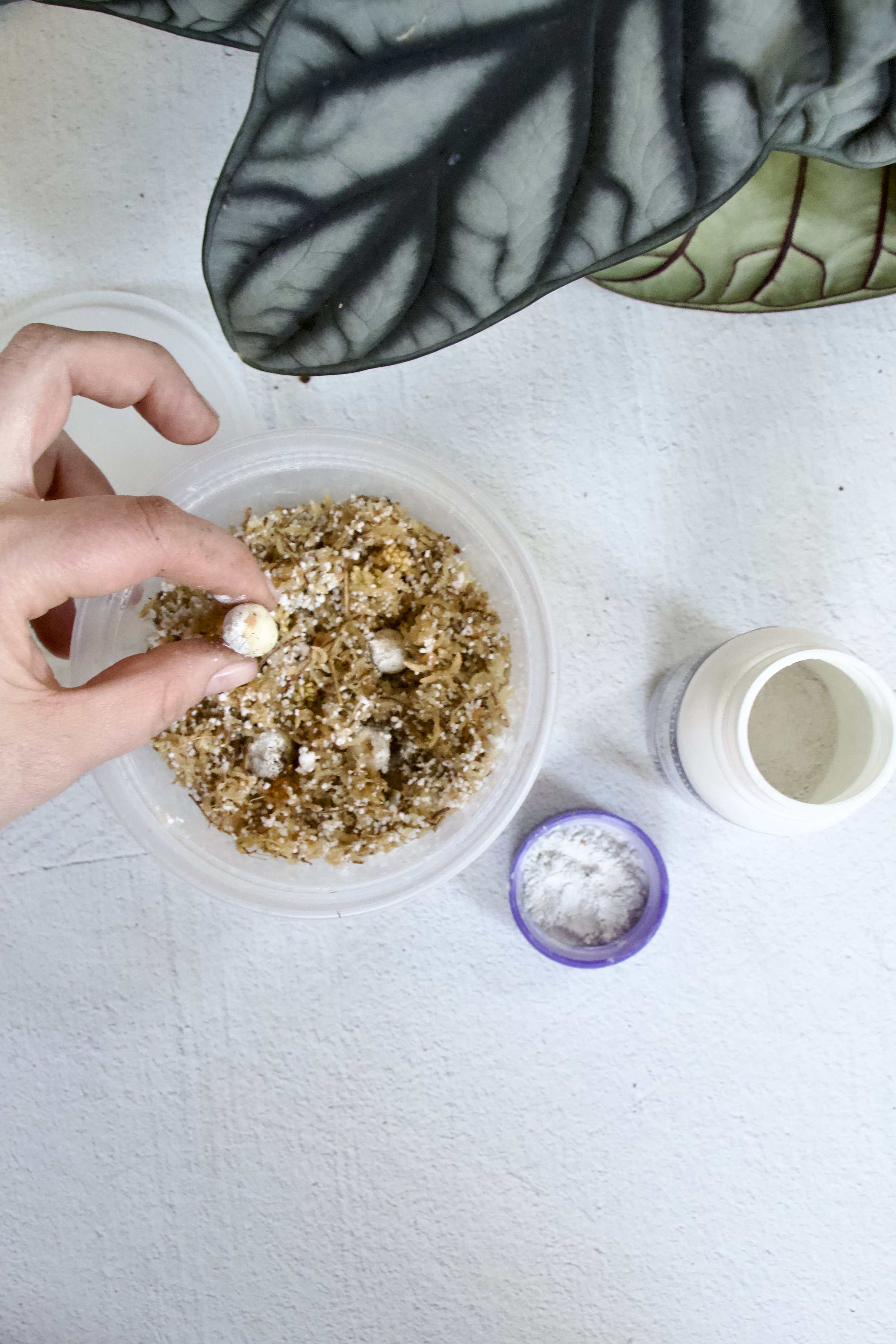Houseplant Propagation 101
Simply put, houseplant propagation is when you make more of your houseplants. You can do this by utilizing parts of the plants to make clones, through sexual reproduction, or, using magic if you’re a witch. All magic aside, there are only two recognized categories of plant propagation: asexual propagation and sexual propagation.
Aseuxal Propagation
Most houseplant collectors are more familiar with asexual houseplant propagation, which is when you take parts of the plant to create clones of the plant. It often simply involves taking a cutting of the plant and encouraging it to grow roots (like you see in the photo below). On the other end of the spectrum, tissue culture, which is done in a laboratory, is the most advanced form of asexual propagation. In asexual propagation, the resulting plant babies are genetically the same as the mother plant. If you want to make carbon copies of a very special plant, asexual propagation is the way to go. Unlike cloning humans, cloning plants is considered completely ethical!
A large Philodendron verrucosum stem cutting that I propagated asexually in spghagnum moss.
The most common asexual houseplant propagation techniques include:
1. Taking Cuttings:
a. Stem Cuttings : This is the most common of all propagation techniques among both tropicals and many succulents. It involves cutting plants along the internode (the space between two nodes), placing the node(s) it in a moist medium, and wait for the cutting(s) to grow new roots.
b. Petiole Cuttings: Used on tropical plants such as peperomia. Here you are simply taking a cutting at the base of the petiole and placing the cutting in moist propagation medium to encourage new root and shoot growth from the bottom of the petiole.
c. Leaf Cuttings:
i. Leaf vein cuttings for tropicals like begonias, peperomias
ii. Leaf blade cuttings for snake plants
iii. Entire leaf propagations for a succulent such as echeveria species
2. Layering: encourage your mother plant to grow roots before you cut and propagate a piece of it
a. Air-layering: Pack moist substrate such as sphagnum moss against the plant’s node from which you want roots to grow and wrap it with plastic wrap / put it in a plastic rooting ball and wait for roots to grow.
b. Ground Layering: lay and pin down the node(s) of a trailing plant on top of moist substrate with the intention of it growing roots in the substrate.
3. Division: Effective if your plant grows in clumps (such as calatheas / goeppertias) connected by an underground stem/ rhizome (outdoor gardeners are familiar using this technique on spreading plants such as hostas and sedum in the garden).
4. Offsets / Pups: i.e., spider plant babies / pilea peperomiodes babies/ agave
5. Underground storage structures: i.e., alocasia corm propagation / oxalis corm propagation
Planting peeled Alocasia corms in mini prop-boxes (take-out containers) filled with moist sphagnum moss and perlite mixed. On the right is rooting hormone powder.
Sexual Propagation
Sexual propagation is exactly what it sounds like: PLANT SEX! Sorry, but my publishing company wouldn’t let me talk a whole lot about plant sex / make dirty jokes in my propagation book, but this is my personal blog so I say what I want. Sexual propagation is when you breed plants together (just as you would breed puppies together – but a very different process that does not involve humping as long as you are a psychologically normal, civilized plant parent).
Sexual propagation is the processes of pollination and fertilization and it’s how I create new Anthurium and Alocasia hybrid species. It involves the manual transfer of pollen from the stamens of one plant to the stigmas on the flowers of the other. If fertilization occurs, berries will form. The berries will ripen with a seed inside that you can extract and plant to form new plants that are genetically unique from the mother and father plants.
Little ole’ me, planting Anthurium seeds'; the result of sexual propagation.
Out of all the propagation techniques, you’re probably wondering which one is best to try out on your favorite plant to make more of it for free. Am I right?
No?
Ok, well then this is awkward.
Let’s just say that you WERE wondering that, and to that I’ll say, you’ll just have to read my book, The Ultimate Guide to Houseplant Propagation. to find out. Signed copied can be purchased on my website, here !



